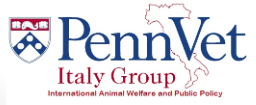Livestock Transport
After a bumpy bus ride up into the surrounding mountains, we arrived at our intended destination: an assembly center for sheep where we would watch the unloading process of transport of animals coming from extended travel. The owner of an assembly center buys livestock from multiple transporters, keeps them on the premesis for a certain time period, (in this case, a minimum of fifteen days), and then sells the livestock to a processor to be slaughtered and processed. At the assembly center, the animals are fed large amounts of food so that they continue to gain weight, making them more desirable to the processor. After processing, the meat enters the food supply.

As part of our lesson about animal welfare during livestock transport, we had the opportunity to observe lambs being unloaded from their truck and moved into pens in the assembly center. To optimize unloading: often the most stressful point of the journey for the animals during transport, certain conditions should be met to prevent animals from becoming frightened and reluctant to move. First, transporters should avoid light-dark transitions in the path where the animals must walk. Due to poor depth perception, animals view sharp transitions from light into shadow as holes, and are scared to walk forward into these “holes.” The ramp used during unloading should be at a sufficiently low incline to prevent slipping and falling. Ramps should be made of rubber, or covered with sufficient bedding material for the same reason. During the sheep unloading that we observed, we noticed that there was a sharp light-dark transition in the middle of the ramp, which made animals reluctant to move into the barn beyond it. The ramp was also metal rather than rubber, though it was covered with straw.
In the European Union (EU), there are regulations determining the amount of time that different animal species may be transported before stopping to rest for 24 hours. Sheep and cows may travel up to 29 straight hours without stopping, and pigs and horses may travel 24 continuous hours. The animals that we observed were being transported from Spain and had just passed through France.



On transport trucks, animals are given access to water through spout drinkers, but food is withheld while traveling. Younger animals more easily drink from the spout drinkers because the contraptions resemble the teats of their mothers, but older animals may have trouble acquiring water with this system. Because of this, the older sheep will consume more water at the rest stops. When stopping to rest once the number of allowed transport hours has passed, animals are given access to water in troughs, which the adults can more easily drink from, as well as feed. The assembly center we saw provided both food and water, and animals often gathered around the water troughs and feed bunks once they were unloaded.
Transport trucks are required to allot a certain amount of space per animal, to prevent overcrowding. Adult sheep are given 0.2 square meters of space per animal, while lambs may have less space than this due to their smaller size. However, the EU law does not specify the exact amount of space required for lambs. Because of this, producers may get away with overcrowding lambs onto transport trucks. The truck we observed was transporting 720 lambs, split into multiple groups on different levels inside the truck. The floors of the different levels could be raised and lowered to allow loading and unloading of animals. The lambs seemed to have enough space, and when we boarded the truck to get a closer look, conditions were quite good. Sufficient straw bedding had been provided, and the straw was not overly soiled. Ventilation fans were running and it was noticeably cool with good airflow inside to keep the animals comfortable.

It is important to minimize stress of animals during transport for many reasons. Transport stress makes animals more susceptible to disease, which could cause death of animals or a decrease in their production value. Stress also affects the quality of the meat. If distressed during transport, animals will use up the glycogen stores in their muscles, causing decreased lactic acid production in the muscles after slaughter, which results in dark, firm, dry meat which is undesirable to consumers. If highly stressed right before slaughter, there will be excess production of lactic acid in muscles before death, causing breakdown of muscle proteins, which results in pale, soft, exudative meat. This product is also undesirable for consumers and leads to loss of profit and waste.
Healthy animals, which are of good body condition and well-hydrated before transport, and which are provided optimal transport conditions, can be safely transported for long periods of time without a significant decrease in animal welfare. This is the ultimate goal of livestock transport.
